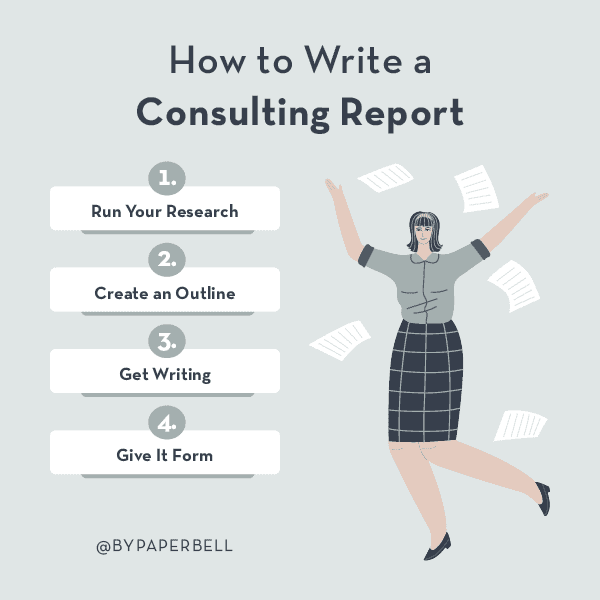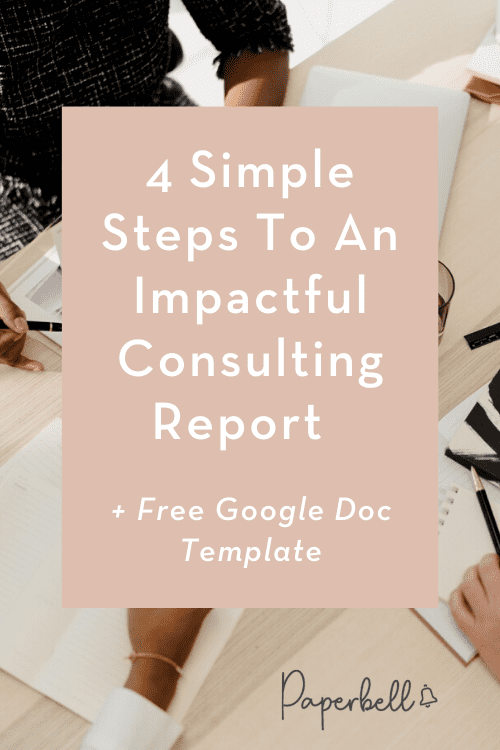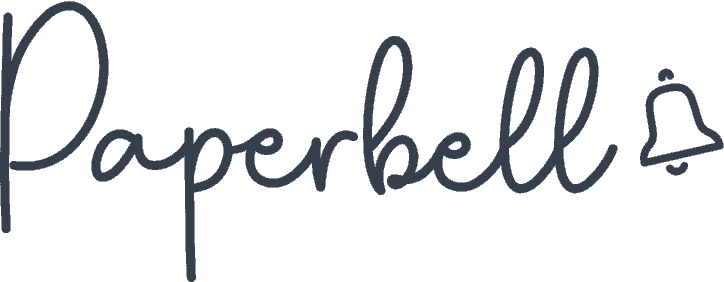Research and data is the key to helping your clients make informed decisions and grow their business. However, there’s only so deep you can go into your analysis in a consulting session. So where’s the space for your hard-earned expertise and the opportunity to present important findings?
Your consulting reports.
Company leaders rely on up-to-date, critical information, but they don’t have the time to run in-depth analysis on the key areas that affect their business. That’s where you come in! Conducting industry research and dissecting what worked and what didn’t in projects won’t just add value to your current contract. It also develops your expertise as a consultant.
That being said, research is only half the battle: if you want to present yourself as an expert, you need to present your findings in a way that’s detailed, yet easy to comprehend. In this article, we’ve gathered everything you need to include in a stellar consulting report and how it should look in the end.
What Is a Consulting Report?
A consulting report can take many different forms, but it’s always written, in-depth research prepared by an expert (that’s you!) It leads the reader through the most relevant data points on a given subject and the interpretation of what the numbers mean in practicality.
Consulting reports are often focused on a specific problem or challenge an organization is facing, and they present solutions examined from multiple perspectives. Everything that’s too long to discuss in a client meeting or during your presentation goes into your reports. If you’ve done a great job, they will be assets for your clients to keep and base their most important decisions upon, sometimes for years to come.
[ Read: What Does a Consultant Do? (And Why It’s Your New Favorite Career) ]
A great consulting report is well-structured and easy to follow. It includes all aspects relevant to the issue, and it presents new insights that aren’t common knowledge or aren’t readily available through a quick round of online research. It breaks down complex data and correlations into simple findings that are reliable assets for high-stake decision-making.
Examples of Consulting Reports
Project Summary
The final steps in any project are to analyze the results, summarize the learnings gained, and evaluate the decisions that were involved. Yet, this crucial element often gets neglected by project leads in companies.
Whether it was your own project you were contracted for or one that you advised a team upon, a project summary is a great way to present valuable lessons learned, to your client. This way, they have the chance to change internal procedures, optimize the allocation of costs, and be more efficient in future projects.
If you’re contracted with a client long term, you may be asked to analyze multiple projects in a business year and prepare an annual business summary. This will then be the basis of setting new company objectives and metrics in the new business year, incorporating last year’s key learnings.
Industry Reports
Industry reports bring a wider perspective to companies about what other key players on the market do and how they can compete with them. A competitor analysis showcases the value other similar businesses provide to customers and highlights the market gaps they haven’t explored yet.
It can shine some light on the latest competitor products and services, as well as potential new competitors who haven’t appeared on the market yet. Based on an industry report, business leaders can make better decisions on their product strategy and recruit new talent suited for emerging market trends.
Industry reports aren’t just valuable resources for your current client. They also arm you with a competitive advantage as a consultant. The more you specialize in a specific market, the more trusted you’ll become as an expert in that industry.
Business Case Study
Business case studies are a great way to present proven solutions that have worked in the past. A strong case study has the potential to provide a shortcut to an otherwise long and costly experimentation process and save a fortune for your client.
Case studies normally describe the central issue the company is facing and the larger context of it. They then present the thought process behind each potential solution and why the winning solution was picked. Last but not least, they present how the winning solution was carried out, the results it brought, and the learnings that can be taken from that strategy.
Business Model Comparison
Choosing a business model is one of those long term decisions for an organization that needs to stand the test of time, hence it needs to be based on reliable data and research. As a consultant, you can help your clients explore the business models their competitors use, or you can help them come up with an entirely new approach that can maximize their profit margins.
A consulting report that compares business models or business plans normally focuses on the different customer segments the company’s products serve (niche markets vs mass markets) and the customer relationship that will be established within them. They also take into account the available distribution channels and partnership opportunities, as well as the cost structure and revenue streams that a business model would entail.
Social Media Reports
This type of consulting report is most commonly requested by businesses where social media is a central part of the marketing and branding strategy. Social media reports work as a check-in on the strategic goals set for certain channels and the key metrics in a given time period. They highlight the best performing content pieces and campaigns and bring valuable feedback on what worked and what didn’t with followers.
When you prepare a social media report, make sure you focus on the key success indicators for the business you consult and avoid vanity metrics that may look good on paper but talk little about the actual progress on objectives.
How to Write a Consulting Report
A consulting report is much like a research paper, except that theoretical findings will bring little value unless they can be immediately implemented in the business strategy of your client. You might find that 80% of the work you put into preparing a report is spent researching versus actually writing it, but of course, this varies on a case-by-case basis. One thing is for sure: the more you do it, the better you’ll get at it, and the less time it will take.
Here are the steps worth following when writing a consulting report.

1. Run Your Research
You don’t want to start writing until you’ve gathered, read, processed, and arranged all relevant information about the subject. Request access to company documentation if you need to, review analytics for marketing and sales, interview key stakeholders, and collect your inputs from reliable industry resources.
2. Create an Outline
Give your writing a structure that works best for the type of consulting report you’re working on. As a general outline, you can follow this flow and customize it to your research subject. It won’t just keep your report neat but also help you gauge how much time it will take for you to work out each section.
- Cover Page: Here’s where the title of your report goes, the date it was published, as well as who it’s prepared by (aka your name) and whom it’s prepared for (aka your client’s name.)
- Table Of Contents: Adding a list of chapters and page numbers will make your report look more professional and make it much easier to navigate.
- Executive Summary: Your executive summary will conclude the main findings of your report at the very beginning. It’s basically the TLDR of the business world. More on how to nail this below.
- Introduction: Here’s where you provide context on the central issue your report will revolve around and why it’s significant. You can also bring information to the reader’s attention here that might influence the way they interpret your findings.
- Analysis: Your analysis should list each objective or option examined by you and all data and research supporting the statements you make.
- Key Findings: This is where you present the results of your research and offer possible solutions to problems.
- Conclusion: Your conclusion will sum up everything described in your research and may highlight the best possible solution found.
- Appendix: Optionally, you can include a list of the resources you worked from in order to back up your statements.
3. Get Writing
Finally, it’s time to get those words on paper. If you’ve done a great job at your research and structuring your outline, your writing process should flow much more effortlessly at this point. Once you’re done with your first draft, make sure you run one or two rounds of edits on your report and proofread it (or better yet, ask a second pair of eyes to do it for you.)
4. Give It Form
If you’re absolutely sure your consulting report has all the i’s dotted and t’s crossed, format it and give it a neat design. There are plenty of tools you can use to make your research look like it’s professionally designed without spending hours or a fortune on it, such as Canva or Visme. You can also use our free template below to breathe life into your research.
[ Read: 23 Free Life Coaching Resources to Get Your Little Paws on Right Now ]
How to Write an Executive Summary for a Consulting Report
Although your consulting report opens with the executive summary, it’s actually the section you write last, after you’ve worked out the rest of your research. Since it’s technically a condensed version of your report, it needs to briefly explain the issue you put under the magnifying glass, your most important findings, and the facts and figures surrounding it.
For a standard report that’s a few pages long, it should be no longer than a paragraph. If your report is much longer (sort of like an ebook), your executive summary can go up to one to two pages and include more graphs.
How to Create a Consulting Report Cover Page
The cover page of your consulting report needs to highlight the title and subtitle of your report, as well as your name as the author and the client’s name whom you’re preparing it for. This signals the fact that you’re not just sending over a ready-made report but specifically creating it for your client.
Your cover page gives the first impression to your reader about your work so even though it might contain the least writing, it’s important to put just as much effort into it as the rest of your report. Here’s where you have the chance to showcase your brand through the colors, fonts, and design elements you use.
If you work as an independent consultant and you don’t use set design guidelines for your personal brand, you can use any template to make your research well presented. At the very least, you need to make sure that the fonts you use have great readability and you leave lots of free space on your cover page without making it too crowded.
Use Our Free Consulting Report Template
To get you started, here’s a free consulting report template you can use to make sure your research will be well received.
Mid-Quarter Report [Q4]
Manhattan Division Project
Prepared By: Eve Smith, Marketing Consultant
Prepared For: Dream & Co. Ltd.
01.02.2023
Table of Contents
Executive Summary
Introduction
Insight #1
Insight #2
Insight #3
Key Finding #1
Key Finding #2
Key Finding #3
Conclusion
Appendix
Page X
Page X
Page X
Page X
Page X
Page X
Page X
Page X
Page X
Page X
Executive Summary
This is where you would sum up the key findings of your report.
Make sure you write this section of your report last, after your entire analysis is done. Explain the main challenge or hypothesis that was the reason for writing this report in a sentence or two.
Then move on to the most important insights that came out of your analysis, sort of what you would highlight with a marker if you were to interpret the report as a reader.
It’s a great place to include the most significant data points or statistics that support your final conclusion without going into too much detail. Keep it short, informative, and convincing.
Introduction
Your introduction should describe the central issue your report is about.
For a project summary or a periodical report, you may list the key initiatives that you and your client focused on.
For an industry report, you may list the market trends or industry players you’ll examine in your analysis and the reason for choosing them.
You can also explain why certain metrics were analyzed in your research and not others.
All in all, this is where you provide context for your readers about your core subject, explain the “why” behind it, and provide an angle through which they can understand your analysis better.
Insight #1
Now is the time to get down to the details and explain each aspect of your core subject1. Consulting frameworks or simple SWOT analysis could come in handy here.
SWOT Analysis
| Strengths | Weaknesses |
| Better profit margins Improved customer experience | High production costs High competition |
| Opportunities | Threats |
| New emerging markets New outsourcing model | Mismatch with current business model Unclear projection on turnover |
Insight #2
Drop in your best statistics and graphs here that support your statements.
Metrics & Analytics
| KPI | Target | Result |
| Engagement | 2.6% | 2.3% |
| Reach | 5.4 million | 5.7 million |
| Comments | 500 | 625 |
| Influencer Mentions | 10 | 12 |
Insight #3
Give as much information about your key metrics, competitors, or business models here as you can for your client to consider.
Key Findings #1
Now that you’ve explained everything the client needs to know about the subject, you can propose some solutions for the central issue.
Key Findings #2
Be specific about why you think this could work for your client and how it would look in practice2.
Key Findings #3
Of course, don’t forget to explore the potential risks of each solution as well and examine them from multiple angles.
Conclusion
After you’ve explained your analysis and provided possible solutions, you can sum up your findings and give suggestions on the steps ahead.
Highlight the solution once again that you think would best benefit your client, and set clear expectations on what it would entail to implement it.
Appendix
1 John Biel, The History Of Social Media, New York Times, 2021
2 Carrie Smith, Is Freemium Really The Future?, Penguin Books, 2018
Google Docs Consulting Report Template
Here’s a Google Doc template you can use for your consulting report. Just go to File > Download to edit this file.










